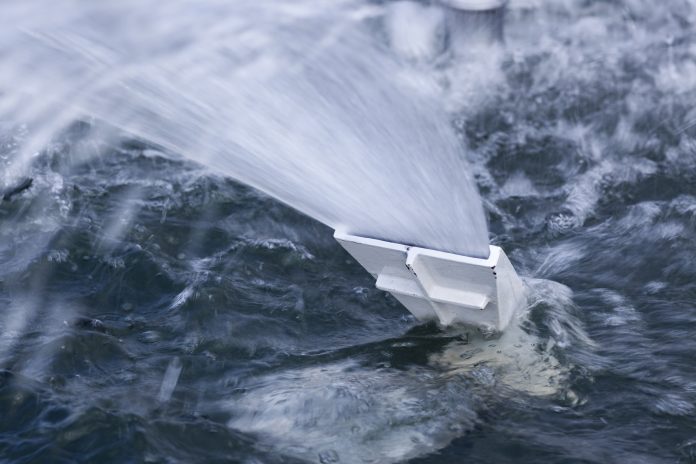Charlie Dempster, UK & European Patent Attorney at Mathys & Squire provides a focus on chemistry, specifically detailing nanocellulose in water purification
Water purification technologies are becoming of increasing importance in modern society. Various innovative solutions are being developed by businesses to address the issue of water purification. Intellectual property such as patents can be used to help these organisations gain an upper hand over their competitors.
Water purification processes are essential for the provision of an adequate supply of drinking water for the world’s population. Water purification is also important in various industries such as chemical, pharmaceutical and wastewater management. It is estimated that of the millions of people that die around the world each year from infections such as diarrheal disease, a large number of these infections could have been prevented by access to safe drinking water (1).
Filtration technology
Filtration is a key technology used in water purification. In recent years, there has been an increasing interest in using nanomaterials in membranes for water filtration, which are considered attractive due to their larger surface area compared to bulk particles. The surfaces of many nanomaterials can also be modified by chemical treatment, enabling the nanomaterial to be tailored for removal of a particular contaminant. A nanomaterial is typically understood to be composed of particles that have at least one dimension of 1 nm-100 nm in size. Numerous types of nanomaterials have been studied for potential use in water purification processes, including nanocellulose, carbon nanotubes, graphene and its derivatives, and dendritic polymers (2).
Nanocellulose filtration
Of these materials, nanocellulose has attracted considerable attention since it is an abundant renewal material, derived from cellulose – the most abundant naturally occurring polymer on earth. It is produced by and can be extracted from a great many plants and is also chemically inert with good mechanical strength, meaning it is suitable for use in filtration membranes. Nanocellulose has an abundance of hydroxyl groups upon its surface. This property, along with its large surface area, enables nanocellulose to be chemically treated in a variety of different ways so as to have an affinity towards a particular contaminant or pollutant that it is desired to remove during water purification (2, 3, 4).
Examples of nanocellulose surface modification include carboxylation, sulfonation, phosphorylation and esterification of the nanocellulose surfaces. The surface modification is selected based upon the contaminant desired to be removed from the water. For example, negatively charged functional groups such as carboxylate and sulphate groups can be introduced if it is desired to remove positively charged contaminants from the water (such as various toxic metal ions). Similarly, positively charged functional groups can be introduced if it is desired to remove negatively charged contaminants. It has also been possible to remove organic pollutants such as dyes, pharmaceuticals, oils and pesticides from water with nanocellulose functionalised with hydrophobic groups that have an affinity for these molecules (3).
Nanocellulose exists as cellulose nanocrystal (CNC) or cellulose nanofibers (CNF). CNF is composed of cellulose fibrils that are typically from 2 nm – 20 nm in width, with a much longer length. CNC is composed of nanoparticles that are shorter in length than the CNF fibres(3). Preparation of nanocellulose filtration membranes typically involves extracting cellulose from plants before chemically treating the cellulose and then membrane formation. Conventional techniques for nanocellulose extraction involve using technologies known in the paper industry. However, there have been significant advances in the last decade in nanocellulose extraction: a key development was the use of TEMPO (2, 2, 6, 6-tetramethylpiperidine-1-oxyl radical)-mediated oxidation of wood cellulose. The method is described in Isogai et al (5) and involves TEMPO-mediated oxidation of wood cellulose in water to produce cellulose nanofibers containing C6 carboxylate groups. In this method, the negatively charged carboxylate groups formed by the oxidation electrostatically repel each other, causing the fibres to separate upon gentle mechanical disintegration. The method thus involves both extraction and surface modification of the nanocellulose.
Nitro-oxidation method
Methods such as those discussed above typically involve extracting and pre-treating the cellulose before the TEMPO-oxidation and subsequent mechanical homogenisation. A different and more recent approach is discussed in Sharma et al.(6) in which a nitro-oxidation method was developed to prepare carboxylated CNF directly from untreated plant material by treating the plant material with nitric acid or sodium nitrite. The method is believed to be a more economical process since it requires less processing steps (4).
For nanocellulose-based filtration technology to be commercially implemented on a large scale, cost-efficient processing routes of surface modified nanocellulose must continue to be developed. It will also be necessary to continue to investigate the selectivity of nanocellulose-based membranes for a variety of different pollutants and contaminants, which will likely require further development of the surface modification technologies discussed above (3).
For enterprises involved in commercialising nanocellulose-based membrane technology, protecting their innovations in this rapidly developing field will be vital for gaining a competitive advantage. Patents enable businesses to prevent competitors from using the patented technologies in the jurisdictions in which they are in force and can also be used to generate revenue by licencing patented technology to third parties. Patents could be directed to novel processes for the extraction of nanocellulose from plants, synthetic routes to surface modify the nanocellulose, or new methods of membrane fabrication. Similarly, patents can protect new forms of surface modified nanocellulose, or new filtration membrane structures (e.g. hybrid membranes containing nanocellulose and other materials).
References
(1) Combating Waterborne Diseases at the Household Level, World Health Organization. 2007. Part 1. ISBN 978-92-4-159522-3.
(2) Nanoscale Materials in Water Purification, Thomas et al., Elsevier, 2019.
(3) Nanocellulose-based materials for water purification, Voisin et al., Nanomaterials, 2017, 7, 57.
(4) Chemistry: Sustainable water purification solutions from underutilised biomass, https://www.openaccessgovernment.org/sustainable-water-purification/74400/
(5) TEMPO-oxidized cellulose nanofibers, Isogai et al., Nanoscale 2011, 3, 71 to 85.
(6) A simple approach to prepare carboxycellulose nanofibers from untreated biomass, Sharma et al., Biomacromolecules, 18 (8), 2333-2342, 2017.











